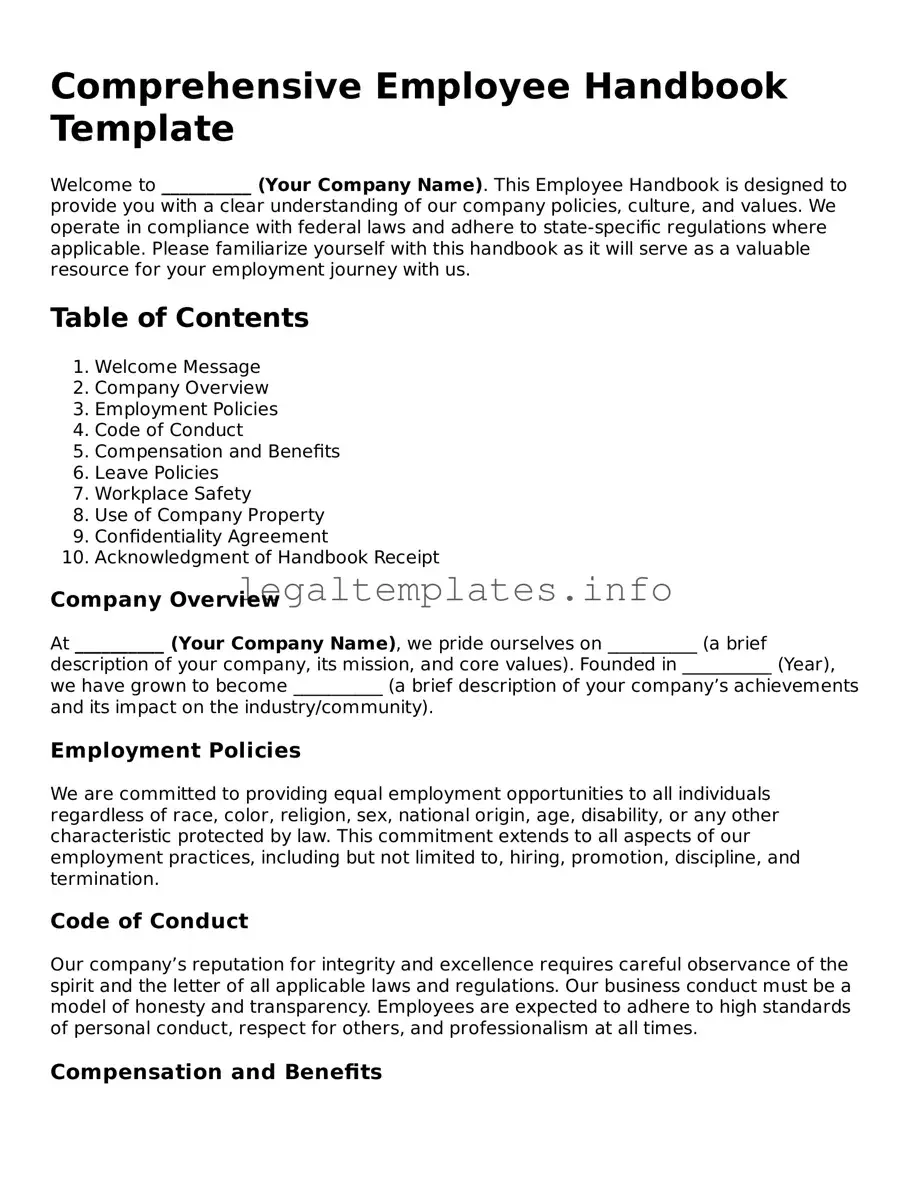Comprehensive Employee Handbook Template
Welcome to __________ (Your Company Name). This Employee Handbook is designed to provide you with a clear understanding of our company policies, culture, and values. We operate in compliance with federal laws and adhere to state-specific regulations where applicable. Please familiarize yourself with this handbook as it will serve as a valuable resource for your employment journey with us.
Table of Contents
- Welcome Message
- Company Overview
- Employment Policies
- Code of Conduct
- Compensation and Benefits
- Leave Policies
- Workplace Safety
- Use of Company Property
- Confidentiality Agreement
- Acknowledgment of Handbook Receipt
Company Overview
At __________ (Your Company Name), we pride ourselves on __________ (a brief description of your company, its mission, and core values). Founded in __________ (Year), we have grown to become __________ (a brief description of your company’s achievements and its impact on the industry/community).
Employment Policies
We are committed to providing equal employment opportunities to all individuals regardless of race, color, religion, sex, national origin, age, disability, or any other characteristic protected by law. This commitment extends to all aspects of our employment practices, including but not limited to, hiring, promotion, discipline, and termination.
Code of Conduct
Our company’s reputation for integrity and excellence requires careful observance of the spirit and the letter of all applicable laws and regulations. Our business conduct must be a model of honesty and transparency. Employees are expected to adhere to high standards of personal conduct, respect for others, and professionalism at all times.
Compensation and Benefits
__________ (Your Company Name) offers a comprehensive compensation and benefits package designed to support the health, well-being, and financial security of our employees and their families. Details on salary structure, health insurance, retirement plans, and other benefits are provided upon employment and reviewed annually.
Leave Policies
Our leave policies are designed to provide employees with the flexibility they need to maintain a healthy work-life balance. We offer several types of leave, including vacation, sick, personal, and parental leave, in compliance with federal and __________ (Your State) Family Leave Act regulations where applicable.
Workplace Safety
Maintaining a safe work environment is a top priority at __________ (Your Company Name). We adhere to all safety guidelines and regulations to prevent workplace injuries. Employees are required to report any unsafe conditions or accidents to their supervisors immediately.
Use of Company Property
Company property, including computers, phones, and other equipment, is to be used responsibly and for business purposes only. Unauthorized use of company property is prohibited and may result in disciplinary action.
Confidentiality Agreement
As an employee of __________ (Your Company Name), you may have access to confidential information. It is vital that you do not disclose any proprietary or confidential information during or after your employment with us without proper authorization.
Acknowledgment of Handbook Receipt
All employees are required to sign an acknowledgment form stating that they have received, read, and understood the contents of this Employee Handbook. The signed form will be kept in your personnel file.
For questions or further clarification on any of the policies contained within this handbook, please contact __________ (HR Department Contact Information).
